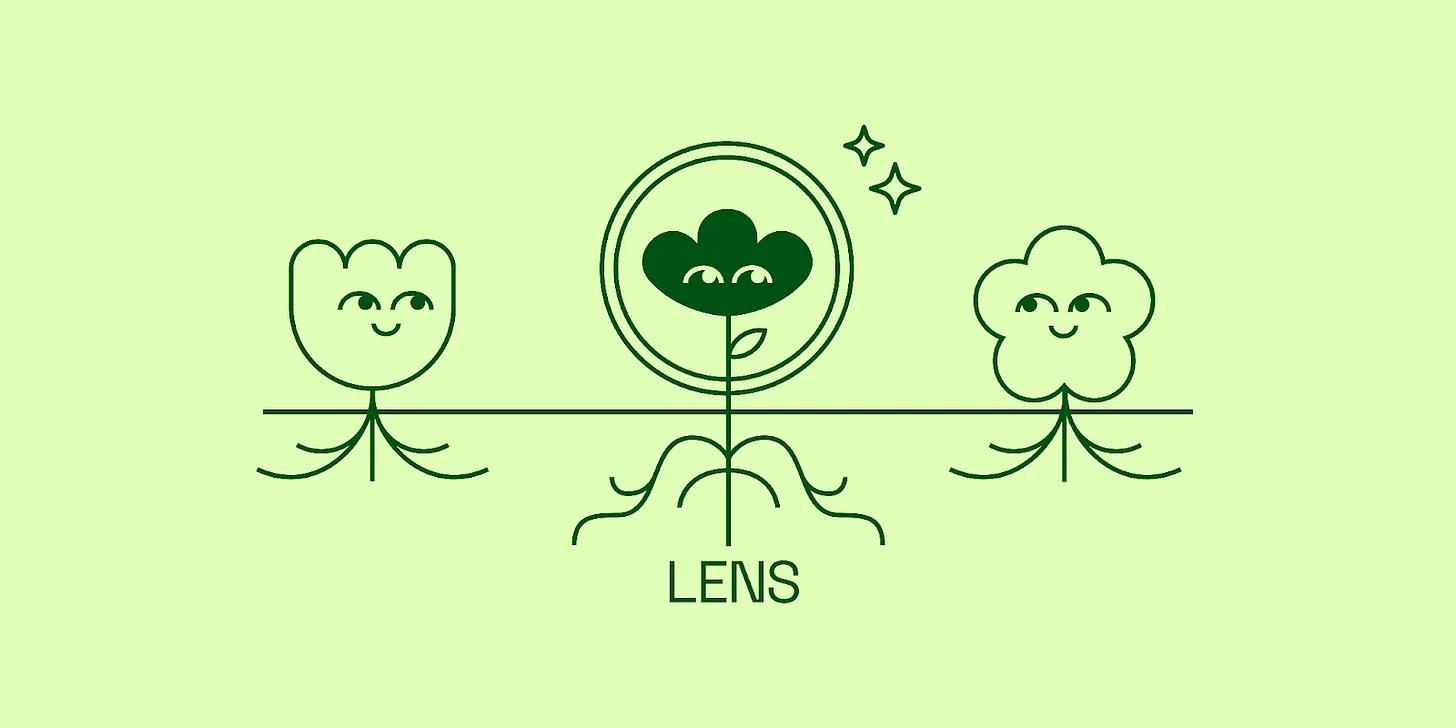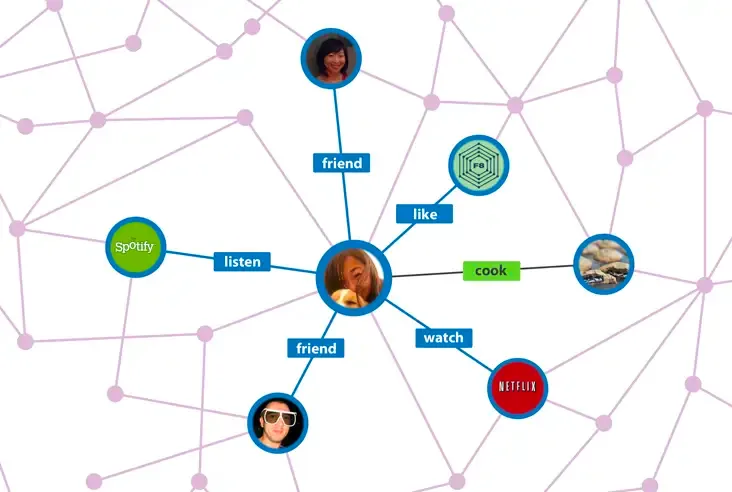Introduction
In the long run, the importance of Lens Protocol as a project lies in its paradigm shift in the way we design and operate social networks.
Written by: STANFORD BLOCKCHAIN CLUB (Stani Kulechov, Jay Yu)
Translated by: DeepTech TechFlow

Introduction
Social media touches everyone's lives - despite the numerous issues with today's most popular social media platforms (such as data collection, misinformation, censorship), we still seem to be "addicted" to platforms like Twitter, Instagram, and TikTok.
So, why are we so drawn to these platforms? Perhaps the fundamental reason is simple - for better or for worse, these social media giants have monopolized our "social graph," capturing, controlling, and exploiting our ways of connecting with others in terms of contacts, time, and manner. To truly address the systemic design issues of social media, we need a paradigm shift: to make the "social graph" open and decentralized, rather than closed and monopolized. This is the vision of "decentralized social" that Lens Protocol is trying to pioneer.
Social Apps and Social Graphs
Lens Protocol is not like "familiar" social media startups such as Snapchat, ClubHouse, and BeReal, meaning it is not building a completely new platform for friends, contacts, and communities from scratch. Lens does not have a user interface; it is referred to as the social layer of Web3. Developed by Aave Companies, Lens reimagines social networks using blockchain, smart contracts, decentralized storage, and NFTs, allowing users to own and control their personal profiles, content, and relationships - in other words, their social graph or social capital - and move freely between different social apps. Lens also has a built-in monetization layer and an open data layer.
So, what is the concept of a "social graph," and how does it relate to actual social media platforms (such as Twitter or Instagram)? As the name suggests, the "social graph" is a chart where individual users (or accounts) are nodes, and their relationships, interactions, and social behaviors are different types of lines.

Although conceptually simple, these social graphs provide a powerful way for us to quantify and model our relationships with others, how we like to spend time, and the types of things we generally like and dislike. In short, they are models of us as users.
Social media platforms (such as Facebook or Twitter) have an important symbiotic relationship with these underlying social graphs: whenever users interact with social media apps, this data is recorded and added to the social graph, which then powers targeted content, posts, and friend recommendations. Because the quality of the social graph directly affects the quality of recommended posts and user experience, it forms the foundation "moat" of the core competitive advantage for social media giants (such as Facebook and Twitter).
Just look at the recent trend of Instagram's Threads to see how existing social media platforms quickly build a brand new online community using their existing "social graph." Indeed, by controlling closed social apps and underlying social graphs, existing tech giants make it extremely difficult for any new entrants to disrupt the lucrative business of existing social connections.
However, there is an interesting exception to the monopoly of social graphs - phone book contacts. Unlike the proprietary social graphs of Facebook or Twitter, everyone's phone book contacts are manually curated, decentralized across each user's device, and describe who you are in contact with and socially connected to. In other words, it is the original "open social graph."
Most modern social media platforms (especially instant messaging apps like WhatsApp and Telegram) use phone book contacts as an "open social graph" to provide you with recommended contacts and build your connections on the platform. However, using only phone book contacts to kickstart a social network has a major drawback: unlike the proprietary graphs of Facebook and Twitter, your phone book contacts list is not a richly annotated dataset.
However, despite phone book contacts being "open" and "decentralized," they form a graph without weights, where the mechanic from the bike shop has the same social relationship weight as your best friend. This is why recommended contacts lists from phone books often suffer from serious flaws: they are more likely to recommend acquaintances and distant contacts (like the mechanic from the bike shop) rather than true friends or people with similar interests.
Lens Protocol Ecosystem
On the other hand, Lens Protocol aims to create a richly annotated, open, and decentralized social graph: combining the rich annotation features of the social graphs of Twitter and Facebook with the openness and self-ownership of phone books. The key observation of the Lens technology stack is that there are common factors in social interactions within social applications, which the Lens SDK abstracts into different types of on-chain operations, namely "publish," "comment," and "mirror" (i.e., share, repost, or retweet). Whether it's Facebook, Twitter, or Instagram, all these key operations of social networks can be rewritten as combinations of these basic interactions, forming a rich social graph representing the interactions between users.
For developers, storing this rich social graph in an open, decentralized, and application-abstracted manner allows them to leverage existing social network effects without having to build a new social network from scratch. For users, once they mint an NFT as their profile (such as Stani.lens), they can use this profile across different Lens-driven applications (almost like Google login), creating a simple onboarding process. Additionally, because their social interactions are publicly stored on-chain, they don't have to worry about losing all their contacts and data when migrating to other social apps.
Currently, Lens Protocol has over 100 applications in its ecosystem, covering everything from familiar apps inspired by Facebook and Twitter (such as Lenster and Buttrfly) to mainstream social apps with novel incentive mechanisms (such as Phaver's "earn by sharing"), to more specialized apps like Ensō, which is an app advocating community co-creation of fashion products in a "digital wardrobe." This diverse collection of applications demonstrates the advantages of implementing an open social graph beyond a single social media app, empowering users and making their profiles and relationships not just digital assets hosted on private servers - proving that Lens is attracting more and more interest, in stark contrast to the story of Clubhouse.
Although Clubhouse had a textbook-style successful product launch in 2021, with over 9.2 million downloads in just one month, this once iconic audio-based social media platform is now experiencing large-scale layoffs and seemingly facing a crisis. Undoubtedly, Clubhouse built an extremely successful and valuable social graph in the initial launch phase. However, when the initial hype faded and users lost interest in the product, Clubhouse was unable to leverage the social graph it had created, as this data treasure trove was locked in an app that was on the verge of disappearing.
If applications similar to Clubhouse were implemented based on an open social graph like Lens, even if the app itself disappears after a while, Lens's modular system would allow for transitions or ecosystem developers to explore new ideas beneficial to the entire social graph. Therefore, the core advantage of Lens is that it provides a blank canvas and a large, open design space for top-level applications, where entrepreneurs can experiment and create any experience they envision - a design decision firmly rooted in the decentralized and open principles of Web3.
However, for Lens Protocol to expand beyond the core user base of Web3, scaling is necessary. For Lens Protocol's founder Stani Kuelchov, the key to scaling Lens Protocol lies in popularizing the benefits of Web3 social to the public, while ensuring that the technology is attractive and accessible to current Web2 users.
Kuelchov believes that in the long run, the inherently transparent and beneficial nature of Web3 is the key to attracting users. Currently, the focus of the protocol is on being more open and composable, while adding features that are both novel and familiar to Web2 users. Lens provides the foundational technology for consumer app developers and integrators to create new experiences.
As these technologies mature over time, we can expect the user experience to become more aligned with "familiar" social networks, laying the foundation for true mass adoption through simple one-click solutions integrated with email and phone numbers. Once social apps built on Lens and other decentralized technologies seamlessly integrate into our daily lives, they will transition from being labeled as "Web3 social" to simply "social."
The Future of Decentralization and Content Moderation
As social media applications become increasingly important in our daily lives, the controversy over content moderation is also growing. If there is too little management, platforms are accused of allowing misinformation, bias, and hate speech online. If there is too much management, platforms are accused of censorship and infringing on freedom of speech. Not to mention, in this process, as a platform, your incentive is to maximize ad placement without incurring user opposition.
For social media giants like Facebook, Twitter, and TikTok, all of these form a delicate balance between users, platforms, and regulatory agencies, as everyone tries to achieve a balance in content moderation. The fundamental reason for this ongoing struggle is that no matter what social media platforms choose to do, users will not switch to competitors because the cost is too high. Essentially, as a user, you would rather live in a New York apartment with cobwebs and damaged pipes than in a fully functional new villa in the middle of the Sahara Desert.
Lens Protocol and similar decentralized systems are revolutionizing content moderation. By explicitly separating social applications and layers, it is now easier to launch new social applications. This makes competition fairer and challenges the dominance of giants like Facebook and Twitter.
By introducing decentralized social graphs as a public good at the social application layer, Lens Protocol introduces more intense competition, incentivizing any application to carefully consider its moderation policies and develop user-centric experiences rather than ad-centric ones. Essentially, decentralization means users are more likely to "vote with their feet." The idea of achieving content moderation through decentralization can be traced back to Reddit's design and content moderation practices, where each community has its own moderators and determines its own approach, providing a new paradigm different from the "one-size-fits-all" approach on most current social media platforms.
Conclusion
In the long run, the importance of Lens Protocol as a project lies in its paradigm shift in the way we design and operate social networks. As mentioned above, the core idea of separating the "social application layer" and the "social graph layer" gives users and creators greater flexibility in choosing when, where, and how to interact with each other, and introduces profile portability that is not achievable in today's mainstream social media.
Just as Uniswap, Aave, and other DeFi projects have shown a paradigm shift in how we conceptualize finance, without the involvement of traditional third-party intermediaries (such as exchanges and brokers), Lens and other decentralized social projects demonstrate how to rethink social media in a paradigmatic way. Decentralized social media does not need to replace existing social media applications; the important thing is that they provide us with a way to reimagine the current state of social media applications and offer choices to users.
免责声明:本文章仅代表作者个人观点,不代表本平台的立场和观点。本文章仅供信息分享,不构成对任何人的任何投资建议。用户与作者之间的任何争议,与本平台无关。如网页中刊载的文章或图片涉及侵权,请提供相关的权利证明和身份证明发送邮件到support@aicoin.com,本平台相关工作人员将会进行核查。




